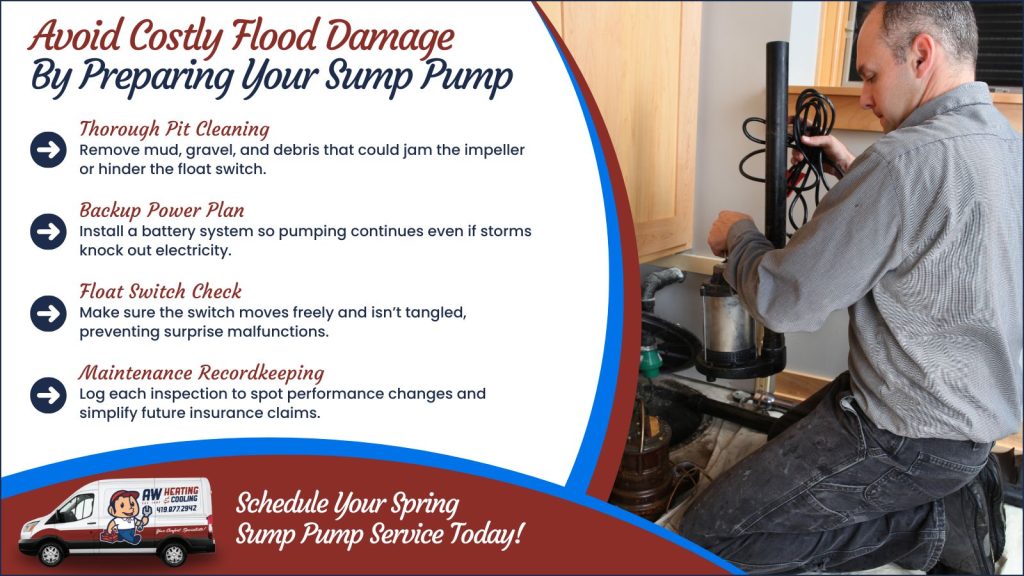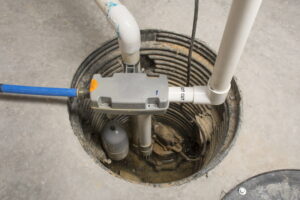As winter fades and spring showers roll in, one of the most important tasks for homeowners in Maumee is ensuring that their sump pump is ready for action. A working sump pump is the first line of defense against a flooded basement, mold growth, and costly water damage. If you live in a flood-prone area or have experienced basement leaks in the past, now is the perfect time to take preventative steps. This spring checklist will help you perform the essential maintenance your sump pump needs before the rainy season hits.

1. Test Your Sump Pump Functionality
The easiest way to test your sump pump is to pour a bucket of water into the sump pit. If the pump turns on and quickly removes the water, you’re in good shape. If it doesn’t, or if the pump runs sluggishly, it may need cleaning, repair, or replacement.
2. Inspect the Power Source
Ensure your sump pump is plugged into a grounded electrical outlet and that the cord is in good condition. Consider a battery backup system to keep your pump running during power outages, which are common during spring thunderstorms.
3. Clean the Sump Pit
Debris like mud, gravel, or loose materials can clog your sump pump or interfere with the float switch. Cleaning out the sump pit ensures smooth operation and helps prevent damage to the pump mechanism.
4. Check the Discharge Line
The discharge pipe should be free from obstructions and directed away from your home’s foundation. Check for blockages like ice, leaves, or debris. Also, ensure the line hasn’t shifted or disconnected during the winter freeze-thaw cycles.
5. Examine the Float Switch
The float switch is a crucial component that activates the pump when water levels rise. Make sure it moves freely and isn’t stuck or tangled. A faulty switch is one of the most common causes of pump failure.
6. Schedule Professional Maintenance
While basic checks can be done at home, a thorough inspection by a service professional can uncover hidden issues like worn-out components or electrical concerns. For trusted sump pump maintenance in Maumee, local service professionals can offer peace of mind with expert service.
7. Keep a Record of Service
Document each time you test or service your sump pump. This habit helps you track performance over time and makes it easier to identify when a replacement may be needed. Plus, having a clear maintenance record can be a lifesaver during insurance claims or home inspections.
8. Know the Signs of Failure
Unusual noises, constant cycling, or water pooling near the pump are red flags that should not be ignored. Early intervention can prevent a minor issue from becoming a major repair.
Preparing your sump pump for spring is one of the smartest moves you can make to protect your home. With just a little time and attention, you can avoid basement flooding and enjoy the season with confidence. It’s a simple step that pays off when the storms roll in.
Contact AW Heating & Cooling, Your Comfort Specialists. We’re just a call away!

